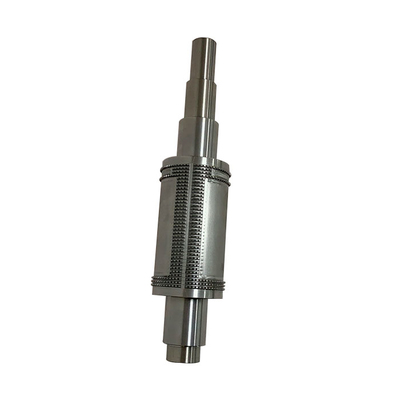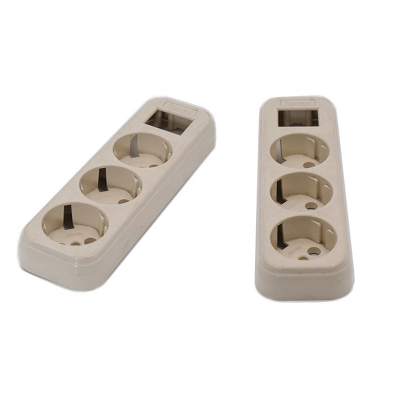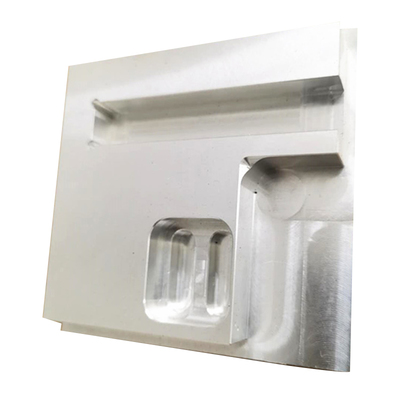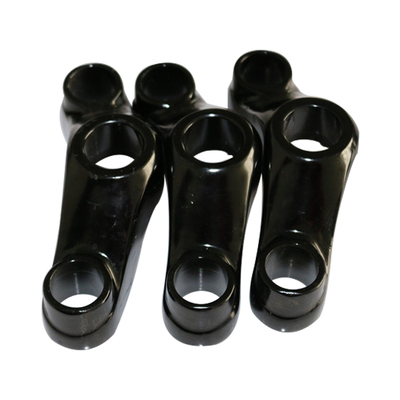Continuity of Microstructure and Thermal Stress Evolution in Laser Additive Manufacturing-CNC Reprocessed Composite Components

Laser additive manufacturing (LAM) combined with computer numerical control (CNC) reprocessing represents a transformative approach in modern manufacturing, enabling the production of complex composite components with tailored properties. This hybrid manufacturing process integrates the layer-by-layer material deposition of LAM with the precision subtractive machining of CNC, allowing for the creation of parts with intricate geometries, enhanced mechanical properties, and improved surface finishes. However, the interface between LAM-deposited material and CNC-reprocessed regions introduces significant challenges related to microstructure continuity and thermal stress evolution. These phenomena occur across multiple time scales, from the rapid thermal cycles during laser processing to the slower mechanical and thermal interactions during CNC machining. Understanding the interplay between microstructure continuity and thermal stress is critical for optimizing the performance, reliability, and durability of composite components produced through this hybrid approach.
This article explores the continuity of microstructure at the interface of LAM-CNC reprocessed composite components and the evolution of thermal stress across multiple time scales. It delves into the fundamental principles of LAM and CNC processes, the metallurgical transformations at the interface, and the mechanisms governing thermal stress development. Recent studies are reviewed to provide a comprehensive understanding of these phenomena, supported by detailed tables comparing key parameters and outcomes. The article is structured to provide a rigorous, scientific examination of the topic, suitable for researchers, engineers, and academics in the fields of materials science, mechanical engineering, and additive manufacturing.
Fundamentals of Laser Additive Manufacturing and CNC Reprocessing
Laser Additive Manufacturing
Laser additive manufacturing encompasses techniques such as laser powder bed fusion (LPBF) and laser metal deposition (LMD), which use a high-energy laser to melt and fuse metallic or composite powders layer by layer. LPBF, for instance, involves spreading a thin layer of powder on a build platform, selectively melting it with a laser, and solidifying it to form a solid structure. LMD, on the other hand, feeds powder or wire coaxially into a laser beam to deposit material onto a substrate. These processes enable the fabrication of complex geometries with high precision, making them suitable for aerospace, biomedical, and automotive applications. However, the rapid heating and cooling cycles in LAM result in non-uniform microstructures, high residual stresses, and potential defects such as porosity and cracks.
The microstructure of LAM components is influenced by process parameters such as laser power, scanning speed, and hatch spacing. For example, high laser power and low scanning speed reduce cooling rates, leading to coarser microstructures, while lower power and higher speeds produce finer grains due to rapid solidification. The resulting microstructure often exhibits high dislocation densities, cellular structures, and anisotropic grain growth, which can affect mechanical properties and corrosion resistance.
CNC Reprocessing
CNC reprocessing involves subtractive machining techniques, such as milling, turning, or grinding, to refine the geometry, surface finish, and dimensional accuracy of LAM components. CNC machining removes material from the as-built LAM part, addressing issues like surface roughness and dimensional tolerances that are often suboptimal in additive manufacturing. The mechanical interaction between the cutting tool and the LAM material induces localized stresses and potential microstructural alterations, particularly at the interface between the LAM-deposited material and the machined surface.
The integration of CNC reprocessing with LAM creates a hybrid manufacturing process that leverages the strengths of both additive and subtractive methods. However, the transition zone between the LAM-deposited material and the CNC-machined surface introduces complexities in microstructure continuity and stress distribution, which are critical to the component's performance.
Hybrid LAM-CNC Process
The hybrid LAM-CNC process involves depositing material via LAM, followed by CNC machining to achieve the desired geometry and surface quality. This approach is particularly advantageous for composite components, where reinforcements such as ceramic particles or fibers are incorporated into a metal matrix to enhance properties like strength, hardness, and wear resistance. The interface between the LAM-deposited composite and the CNC-machined surface is a critical region where microstructure continuity and thermal stress evolution must be carefully managed to prevent defects and ensure optimal performance.
Microstructure Continuity at the LAM-CNC Interface
Microstructural Characteristics of LAM Components
LAM processes produce unique microstructural features due to their rapid solidification rates and complex thermal histories. These features include:
-
High Dislocation Density: The rapid cooling in LAM results in a high density of dislocations, which contribute to the material's strength but can also lead to residual stresses.
-
Cellular and Dendritic Structures: The melt pool dynamics in LAM create cellular or dendritic substructures, with cell sizes ranging from sub-micron to several microns, depending on the cooling rate and alloy composition.
-
Anisotropic Grain Growth: The directional heat flow in LAM leads to columnar grain growth along the build direction, resulting in anisotropic mechanical properties.
-
Phase Transformations: In alloys like Ti-6Al-4V, rapid cooling can lead to the formation of martensitic phases, such as α′-martensite, which affect mechanical and corrosion properties.
These microstructural characteristics are influenced by process parameters and material composition. For example, in LPBF of 316L stainless steel, a continuous scan strategy produces smaller grain and cell sizes (400–900 nm cells within 40–60 μm grains) compared to stripe strategies, enhancing mechanical properties.
Microstructural Changes During CNC Reprocessing
CNC machining introduces mechanical deformation and localized heating at the surface of LAM components, altering the microstructure in the machined region. Key changes include:
-
Surface Recrystallization: The mechanical energy from cutting can induce recrystallization in the near-surface region, transforming the as-built columnar grains into finer, equiaxed grains.
-
Plastic Deformation: The cutting process introduces plastic strain, leading to increased dislocation density and potential work hardening in the machined layer.
-
Thermal Effects: Friction between the cutting tool and the workpiece generates localized heat, which can cause phase transformations or annealing in the near-surface region, depending on the temperature reached.
These changes create a distinct microstructural transition zone at the LAM-CNC interface, where the as-built LAM microstructure meets the CNC-altered surface. Ensuring continuity across this interface is critical to maintaining the component's mechanical integrity.
Mechanisms of Microstructure Continuity
Microstructure continuity refers to the seamless integration of microstructural features across the LAM-CNC interface, minimizing defects such as cracks, delamination, or abrupt changes in grain morphology. Several mechanisms govern this continuity:
-
Grain Boundary Cohesion: The alignment of grain boundaries between the LAM-deposited material and the CNC-machined surface affects the interface's strength. Misaligned boundaries can lead to stress concentrations and crack initiation.
-
Phase Compatibility: In composite components, the compatibility between the matrix and reinforcement phases (e.g., TiC particles in a titanium matrix) is critical. CNC machining can disrupt the distribution of reinforcements, leading to phase segregation or interfacial decohesion.
-
Thermal History Matching: The thermal history during LAM and CNC processes must be controlled to minimize differences in microstructure evolution. For example, preheating the substrate during LAM can reduce thermal gradients, promoting more uniform grain growth.
Recent studies have shown that optimizing CNC parameters, such as cutting speed and feed rate, can minimize microstructural disruption. For instance, low cutting speeds reduce frictional heat, preserving the as-built microstructure, while high speeds may induce recrystallization or phase changes.
Challenges in Maintaining Microstructure Continuity
Maintaining microstructure continuity at the LAM-CNC interface is challenging due to:
-
Thermal Mismatch: The rapid thermal cycles in LAM contrast with the localized heating in CNC, leading to differences in grain size and phase composition across the interface.
-
Mechanical Stress: CNC machining introduces shear stresses that can cause microcracks or delamination, particularly in composites with brittle reinforcements.
-
Reinforcement Redistribution: In metal matrix composites (MMCs), CNC machining can redistribute ceramic particles, creating non-uniform reinforcement distributions that weaken the interface.
To address these challenges, researchers have explored strategies such as laser-assisted CNC machining, where a laser preheats the workpiece to reduce cutting forces and thermal gradients, and post-processing heat treatments to homogenize the microstructure.
Thermal Stress Evolution Across Multiple Time Scales
Thermal Stress in LAM Processes
Thermal stress in LAM arises from the rapid heating and cooling cycles inherent to the process. These stresses evolve across multiple time scales:
-
Short Time Scales (Microseconds to Milliseconds): During laser scanning, the melt pool experiences rapid heating (up to 10^6 K/s) and cooling (10^4–10^6 K/s), leading to steep temperature gradients and high thermal stresses. These stresses are primarily due to thermal expansion and contraction mismatches between the molten and solidified regions.
-
Intermediate Time Scales (Seconds to Minutes): As multiple layers are deposited, cyclic reheating and remelting occur, accumulating residual stresses across the component. These stresses are influenced by the scanning strategy and laser parameters, with continuous scanning producing lower stresses than island strategies due to more uniform heat distribution.
-
Long Time Scales (Hours to Days): Post-processing treatments, such as annealing or hot isostatic pressing (HIP), can relieve residual stresses but may alter the microstructure, potentially reducing mechanical properties.
The magnitude and distribution of thermal stresses depend on material properties, such as the coefficient of thermal expansion (CTE), and process parameters. For example, materials with low CTE, like Invar, exhibit reduced thermal stresses in LAM.
Thermal Stress During CNC Reprocessing
CNC machining introduces additional thermal stresses due to frictional heating and mechanical deformation. These stresses are localized to the machined surface and evolve over different time scales:
-
Short Time Scales (Milliseconds to Seconds): Frictional heating during cutting generates localized temperature spikes, which can induce thermal stresses in the near-surface region. These stresses are typically compressive due to the mechanical constraint of the cutting tool.
-
Intermediate Time Scales (Minutes): As machining progresses, heat accumulates in the workpiece, potentially causing thermal expansion and stress relaxation in the LAM-deposited material.
-
Long Time Scales (Hours): Post-machining cooling can lead to residual stress redistribution, particularly if the component is not thermally stabilized.
The interaction between LAM-induced residual stresses and CNC-induced stresses can exacerbate defects like warping or cracking, particularly in composites with mismatched CTEs between the matrix and reinforcements.
Multi-Scale Modeling of Thermal Stress
Modeling thermal stress evolution in LAM-CNC components requires multi-scale approaches to capture the complex interplay of thermal and mechanical phenomena. Key methods include:
-
Finite Element Method (FEM): FEM is used to simulate heat transfer, melt pool dynamics, and residual stress development during LAM. It accounts for temperature-dependent material properties and phase changes.
-
Cellular Automata (CA): CA models simulate grain growth and microstructure evolution, providing insights into the effects of thermal gradients on solidification structures.
-
Phase Field (PF) Method: PF methods model phase transformations and dendrite formation, capturing the microstructural changes at the nano- and micro-scales.
-
Computational Fluid Dynamics (CFD): CFD simulates melt pool fluid flow and heat transfer, predicting the impact of laser parameters on thermal stress.
These models have been coupled to predict the evolution of thermal stress across multiple time scales. For example, a CA-FEM coupled model has been used to simulate microstructure alteration and stress development in LPBF of Ti-6Al-4V, revealing the impact of laser power and scan speed on grain morphology and residual stress.
Mitigation Strategies for Thermal Stress
Mitigating thermal stress in LAM-CNC components involves optimizing process parameters and post-processing techniques:
-
Preheating: Preheating the substrate during LAM reduces temperature gradients, lowering residual stresses. For example, preheating Ti-6Al-4V to 400°C can reduce residual tensile stress by 50%.
-
Scan Strategy Optimization: Continuous scan strategies minimize thermal gradients compared to island or stripe strategies, reducing stress concentrations.
-
Post-Processing Heat Treatments: Techniques like HIP and annealing relieve residual stresses but may coarsen the microstructure, affecting mechanical properties.
-
Laser-Assisted CNC: Preheating the workpiece with a laser during CNC machining reduces cutting forces and thermal stresses, improving surface quality.
Recent Studies and Advances
Microstructure Continuity Studies
Recent studies have advanced the understanding of microstructure continuity in LAM-CNC components:
-
Wang et al. (2020) investigated the microstructural evolution of a CrMnFeCoNi high-entropy alloy under cyclic rapid thermal loadings in selective laser melting (SLM). They found that cyclic thermal loads induce dislocation networks that enhance strength but may disrupt continuity at machined interfaces.
-
Liu et al. (2018) studied WC-reinforced Fe-based composites fabricated by LAM, noting that gradient reinforcement/matrix interfaces improve microstructure continuity by reducing thermal mismatch stresses.
-
Salman et al. (2019) explored the addition of TiB2 to 316L stainless steel in SLM, finding that TiB2 promotes finer grain structures, enhancing interface cohesion during CNC reprocessing.
Thermal Stress Evolution Studies
Advances in thermal stress modeling and mitigation include:
-
Chen et al. (2021) used EBSD to analyze LAM steels, demonstrating that post-heat treatments can homogenize grain morphology and reduce residual stresses, improving interface stability.
-
Zhao et al. (2020) investigated laser metal deposition of AA5024 with nanoparticulate TiC, finding that optimized laser parameters reduce thermal stresses and improve microstructure continuity.
-
Dong et al. (2020) developed an FEM model to simulate thermal behavior in SLM of AlSi10Mg, correlating microstructure heterogeneities with residual stress evolution and proposing scan strategies to minimize stresses.
Machine Learning and Optimization
Machine learning (ML) has emerged as a powerful tool for optimizing LAM-CNC processes:
-
Tang et al. (2023) used ML to estimate ceramic microstructure during laser sintering, optimizing parameters to minimize thermal stresses and maintain microstructure continuity.
-
Du et al. (2023) applied a Pareto active learning framework to optimize LPBF parameters for Ti-6Al-4V, achieving high strength and ductility with minimal thermal stress.
-
Saemathong et al. (2023) compared thermal energy calculation models for LAM, using ML to refine process parameters and reduce residual stresses.
Comparative Analysis and Data Tables
To provide a comprehensive comparison of microstructure continuity and thermal stress evolution, the following tables summarize key findings from recent studies and process parameters.
Table 1: Microstructural Characteristics of LAM-CNC Components
|
Material |
LAM Process |
CNC Process |
Microstructure (LAM) |
Microstructure (CNC) |
Continuity Issues |
Mitigation Strategies |
Reference |
|---|---|---|---|---|---|---|---|
|
316L SS |
LPBF |
Milling |
Cellular (400–900 nm), columnar grains (40–60 μm) |
Recrystallized equiaxed grains |
Grain boundary misalignment |
Continuous scan strategy, annealing |
|
|
Ti-6Al-4V |
LPBF |
Turning |
Martensitic α′, columnar β-grains |
Partial recrystallization, plastic deformation |
Phase incompatibility |
Preheating, laser-assisted CNC |
|
|
WC/Fe |
LMD |
Grinding |
Gradient reinforcement interface, dendritic |
Reinforcement redistribution |
Interfacial decohesion |
Optimized cutting speed, HIP |
|
|
SiC/316L |
SLM |
Milling |
Cellular, high dislocation density |
Work hardening, microcracks |
Thermal mismatch |
Low cutting speed, laser preheating |
|
Table 2: Thermal Stress Evolution Across Time Scales
|
Time Scale |
Process |
Stress Type |
Magnitude (MPa) |
Influencing Factors |
Mitigation Strategies |
Reference |
|---|---|---|---|---|---|---|
|
Microseconds–Milliseconds |
LAM |
Thermal |
100–1000 |
Laser power, scan speed |
Low energy input, continuous scanning |
|
|
Seconds–Minutes |
LAM |
Residual |
50–500 |
Scan strategy, layer thickness |
Preheating, optimized scan patterns |
|
|
Minutes |
CNC |
Compressive |
10–200 |
Cutting speed, feed rate |
Laser-assisted machining |
|
|
Hours–Days |
Post-Processing |
Residual |
0–100 |
Annealing temperature, HIP |
Controlled heat treatment |
|
Table 3: Process Parameter Optimization for Microstructure and Stress Control
|
Material |
Process |
Laser Power (W) |
Scan Speed (mm/s) |
Hatch Spacing (μm) |
Preheating (°C) |
Outcome |
Reference |
|---|---|---|---|---|---|---|---|
|
316L SS |
LPBF |
60 |
600 |
10 |
100 |
Small grain size, low stress |
|
|
Ti-6Al-4V |
LPBF |
110 |
200 |
50 |
400 |
Reduced residual stress |
|
|
WC/Co |
LPBF |
100 |
150 |
20 |
- |
Suppressed WC decomposition |
|
|
Cu |
LPBF |
200 |
500 |
30 |
- |
High resolution, low stress |
|
Future Directions and Challenges
The integration of LAM and CNC reprocessing offers significant potential for producing high-performance composite components, but several challenges remain:
-
Multi-Scale Modeling: Developing comprehensive models that link nano-scale phase transformations to macro-scale stress evolution is critical for predicting and controlling interface behavior.
-
Real-Time Monitoring: Implementing real-time monitoring systems, such as those using machine learning, can optimize process parameters and ensure microstructure continuity.
-
Material-Specific Strategies: Tailoring process parameters for specific material systems, particularly composites with complex reinforcement phases, is essential for minimizing defects.
-
Sustainability: Reducing energy consumption and material waste in hybrid LAM-CNC processes is a growing concern, requiring innovations in process efficiency and recycling.
Future research should focus on integrating advanced computational tools, such as machine learning and multi-physics simulations, with experimental validation to achieve precise control over microstructure and stress. Collaborative efforts between academia and industry will be crucial for translating these advances into practical applications.
Conclusion
The continuity of microstructure at the interface of LAM-CNC reprocessed composite components and the evolution of thermal stress across multiple time scales are critical factors in determining the performance of hybrid-manufactured parts. The complex interplay of rapid thermal cycles in LAM and mechanical stresses in CNC machining creates unique challenges in maintaining microstructure continuity and managing thermal stress. Recent studies have provided valuable insights into these phenomena, highlighting the importance of optimized process parameters, post-processing treatments, and advanced modeling techniques. By addressing these challenges through innovative strategies and interdisciplinary research, the LAM-CNC hybrid process can unlock new possibilities for manufacturing high-performance composite components with applications in aerospace, biomedical, and beyond.
Reprint Statement: If there are no special instructions, all articles on this site are original. Please indicate the source for reprinting:https://www.cncmachiningptj.com/,thanks!
 PTJ® provides a full range of Custom Precision cnc machining china services.ISO 9001:2015 &AS-9100 certified. 3, 4 and 5-axis rapid precision CNC machining services including milling, turning to customer specifications,Capable of metal & plastic machined parts with +/-0.005 mm tolerance.Secondary services include CNC and conventional grinding, drilling,die casting,sheet metal and stamping.Providing prototypes, full production runs, technical support and full inspection.Serves the automotive, aerospace, mold&fixture,led lighting,medical,bicycle, and consumer electronics industries. On-time delivery.Tell us a little about your project's budget and expected delivery time. We will strategize with you to provide the most cost-effective services to help you reach your target,Welcome to Contact us ( [email protected] ) directly for your new project.
PTJ® provides a full range of Custom Precision cnc machining china services.ISO 9001:2015 &AS-9100 certified. 3, 4 and 5-axis rapid precision CNC machining services including milling, turning to customer specifications,Capable of metal & plastic machined parts with +/-0.005 mm tolerance.Secondary services include CNC and conventional grinding, drilling,die casting,sheet metal and stamping.Providing prototypes, full production runs, technical support and full inspection.Serves the automotive, aerospace, mold&fixture,led lighting,medical,bicycle, and consumer electronics industries. On-time delivery.Tell us a little about your project's budget and expected delivery time. We will strategize with you to provide the most cost-effective services to help you reach your target,Welcome to Contact us ( [email protected] ) directly for your new project.

- 5 Axis Machining
- Cnc Milling
- Cnc Turning
- Machining Industries
- Machining Process
- Surface Treatment
- Metal Machining
- Plastic Machining
- Powder Metallurgy Mold
- Die Casting
- Parts Gallery
- Auto Metal Parts
- Machinery Parts
- LED Heatsink
- Building Parts
- Mobile Parts
- Medical Parts
- Electronic Parts
- Tailored Machining
- Bicycle Parts
- Aluminum Machining
- Titanium Machining
- Stainless Steel Machining
- Copper Machining
- Brass Machining
- Super Alloy Machining
- Peek Machining
- UHMW Machining
- Unilate Machining
- PA6 Machining
- PPS Machining
- Teflon Machining
- Inconel Machining
- Tool Steel Machining
- More Material





